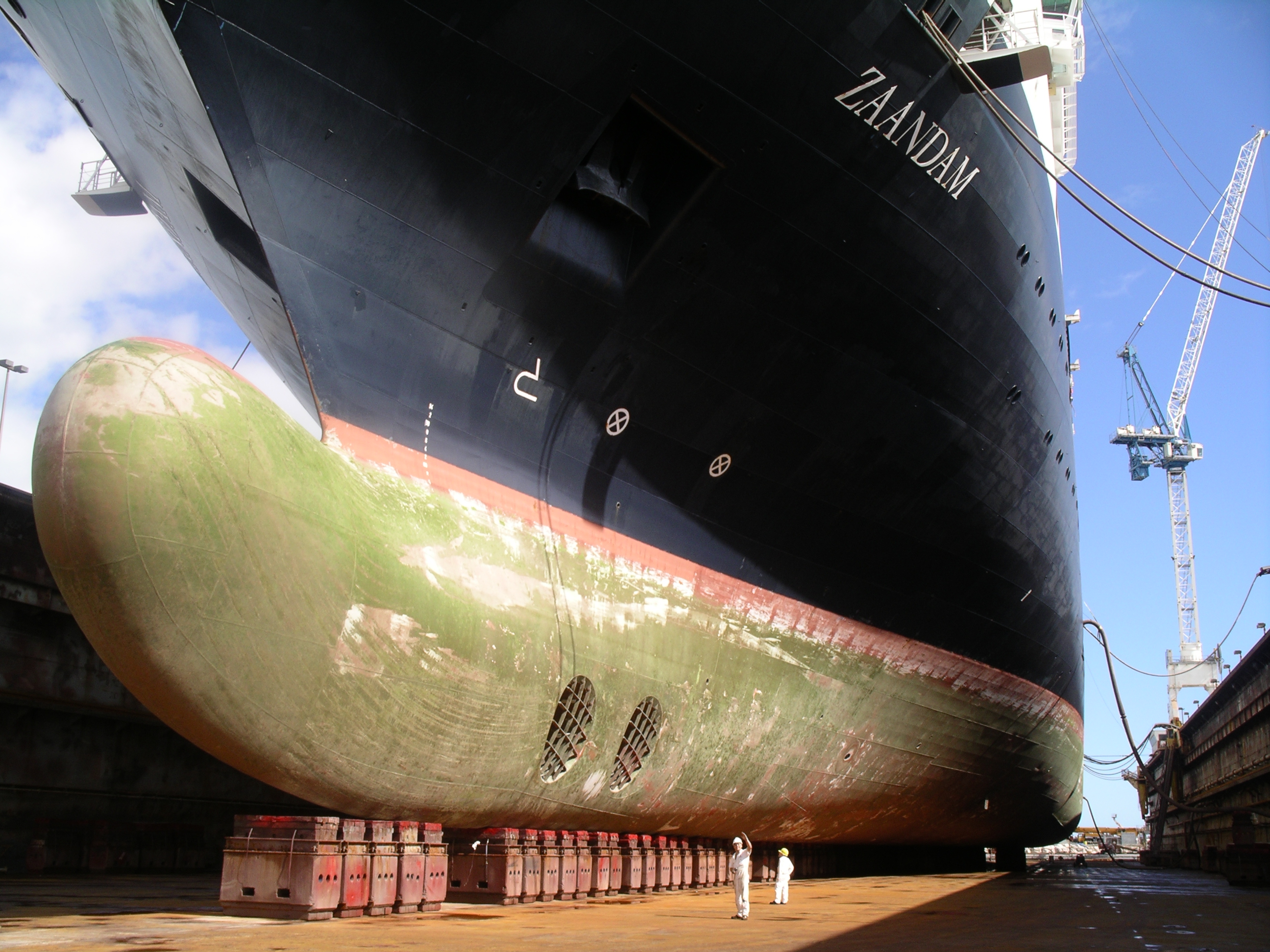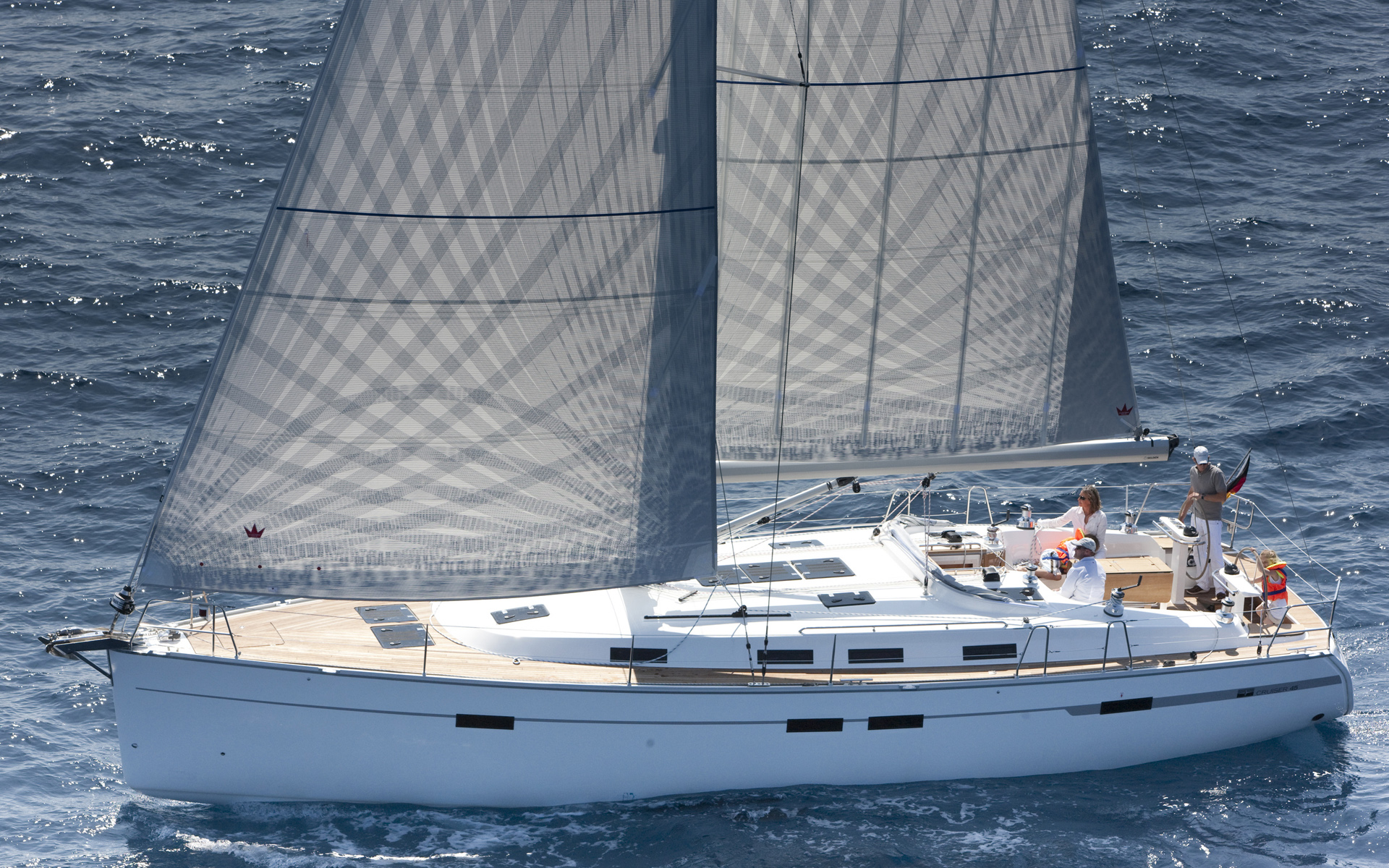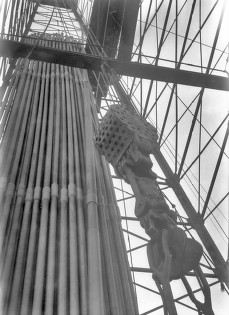|
Bulb Keel
200px, Flat Keel bulb A bulb keel is a keel, usually made with a high aspect ratio foil, that contains a ballast-filled bulb at the bottom, usually teardrop shaped. The purpose of the bulb keel is to place the ballast as low as possible, therefore gaining the maximum possible amount of leverage and thus the most righting moment. An example of a class of boats that use a bulb keel is the International 110 racing class, which uses a 300 lb (136 kg) cast iron bulb keel on a boat whose minimum racing weight is 910 lb (414 kg). Since bulb keels work best on long, thin keels or daggerboards, they are generally not used on sailboats intended for shallow waters, but are most often found on offshore racing craft. Daggerboards built like bulb keels are often referred to as "lifting keels", and they can be retracted into the boat to reduce the draft, and to allow the boat to be loaded onto a trailer. Lifting keels are also more likely to be found on craft built for s ... [...More Info...] [...Related Items...] OR: [Wikipedia] [Google] [Baidu] |
Flat Keel Bulb
Flat or flats may refer to: Architecture * Flat (housing), an apartment in the United Kingdom, Ireland, Australia and other Commonwealth countries Arts and entertainment * Flat (music), a symbol () which denotes a lower pitch * Flat (soldier), a two-dimensional toy soldier made of tin or plastic * Flat (theatre), a flat piece of theatrical scenery * Flat, a leading type of wordplay, as identified by the National Puzzlers' League * ''Flat!'' (2010), an Indian film * Flats (band), an English band * Flats (comics), the first stage in the comic coloring process Footwear * Flats, footwear which is not high-heeled * Ballet flats, derived from ballet shoes, for casual wear as well as dancing * Ballet shoes (also known as ballet slippers), often referred to as "flats" or "flat shoes" * Racing flats, lightweight shoes used primarily for running a race Geography Landforms * Flat (landform), a relatively level area within a region of greater relief Bodies of water * Flat, a shallow ... [...More Info...] [...Related Items...] OR: [Wikipedia] [Google] [Baidu] |
Windward
Windward () and leeward () are terms used to describe the direction of the wind. Windward is ''upwind'' from the point of reference, i.e. towards the direction from which the wind is coming; leeward is ''downwind'' from the point of reference, i.e. along the direction towards which the wind is going. The side of a ship that is towards the leeward is its "lee side". If the vessel is heeling under the pressure of crosswind, the lee side will be the "lower side". During the Age of Sail, the term ''weather'' was used as a synonym for ''windward'' in some contexts, as in the '' weather gage''. Because it captures rain, the windward side of a mountain tends to be wet compared to the leeward it blocks. Origin The term "lee" comes from the middle-low German word // meaning "where the sea is not exposed to the wind" or "mild". The terms Luv and Lee (engl. Windward and Leeward) have been in use since the 17th century. Usage Windward and leeward directions (and the points ... [...More Info...] [...Related Items...] OR: [Wikipedia] [Google] [Baidu] |
Sailboat Components
A sailboat or sailing boat is a boat propelled partly or entirely by sails and is smaller than a sailing ship. Distinctions in what constitutes a sailing boat and ship vary by region and maritime culture. Types Although sailboat terminology has varied across history, many terms have specific meanings in the context of modern yachting. A great number of sailboat-types may be distinguished by size, hull configuration, keel type, purpose, number and configuration of masts, and sail plan. Popular monohull designs include: Cutter The cutter is similar to a sloop with a single mast and mainsail, but generally carries the mast further aft to allow for a jib and staysail to be attached to the head stay and inner forestay, respectively. Once a common racing configuration, today it gives versatility to cruising boats, especially in allowing a small staysail to be flown from the inner stay in high winds. Catboat A catboat has a single mast mounted far forward and does not ca ... [...More Info...] [...Related Items...] OR: [Wikipedia] [Google] [Baidu] |
Bulbous Bow
A bulbous bow is a protruding bulb at the bow (or front) of a ship just below the waterline. The bulb modifies the way the water flows around the hull, reducing drag and thus increasing speed, range, fuel efficiency, and stability. Large ships with bulbous bows generally have twelve to fifteen percent better fuel efficiency than similar vessels without them. A bulbous bow also increases the buoyancy of the forward part and hence reduces the pitching of the ship to a small degree. Vessels with high kinetic energy, which is proportional to mass and the square of the velocity, benefit from having a bulbous bow that is designed for their operating speed; this includes vessels with high mass (e.g. supertankers) or a high service speed (e.g. passenger ships, and cargo ships). Vessels of lower mass (less than 4,000 dwt) and those that operate at slower speeds (less than 12 kts) have a reduced benefit from bulbous bows, because of the eddies that occur in those cases; examples include ... [...More Info...] [...Related Items...] OR: [Wikipedia] [Google] [Baidu] |
Flotsam
In maritime law, flotsam'','' jetsam'','' lagan'','' and derelict are specific kinds of shipwreck. The words have specific nautical meanings, with legal consequences in the law of admiralty and marine salvage. A shipwreck is defined as the remains of a ship that has been wrecked—a destroyed ship at sea, whether it has sunk or is floating on the surface of the water. Overview A wreck is categorized as property belonging to no apparent owner that either sinks to the seabed or floats on the surface of the water, whether it be intentionally cast overboard or as the result of an accident. The term encompasses the hull of the vessel and its fixtures as well as any other form of object on board, such as cargo and stores, and personal effects of the crew and passengers. This also encompasses the narrower definition of salvage, that is, property that has been recovered from a wreckage, or the recovery of the ship itself. There are a number of factors that contribute to the formation ... [...More Info...] [...Related Items...] OR: [Wikipedia] [Google] [Baidu] |
Winged Keel
The winged keel is a sailboat keel layout first fitted on the 12-metre class yacht '' Australia II'', 1983 America's Cup winner. Design This layout was adopted by Ben Lexcen, designer of '' Australia II''. Although Ben Lexcen "had tried the winged keel idea before",Bruce Stannard, ''Ben lexcen, the man, the keel and the cup'', Faber and Faber, 1984, there is conjecture that it was computed and designed by a Dutch aerodynamicist at the Wageningen towing tank (Netherlands Ship Model Bassin). Wings The lateral wings of Australia II are of moderate aspect ratio, forming a nearly horizontal foil, the "wing", at the bottom to provide additional effective span, in the same way as the winglets on an aircraft. Each wing acts as a winglet, effectively increasing the keel aspect ratio therefore reducing the lift-induced drag. Because the yacht is heeled over when sailing upwind, the leeward foil attains more draft, which reduces the loss of efficiency that always occurs under heel. The ... [...More Info...] [...Related Items...] OR: [Wikipedia] [Google] [Baidu] |
Yacht
A yacht is a sailing or power vessel used for pleasure, cruising, or racing. There is no standard definition, though the term generally applies to vessels with a cabin intended for overnight use. To be termed a , as opposed to a , such a pleasure vessel is likely to be at least in length and may have been judged to have good aesthetic qualities. The Commercial Yacht Code classifies yachts and over as . Such yachts typically require a hired crew and have higher construction standards. Further classifications for large yachts are: —carrying no more than 12 passengers, —solely for the pleasure of the owner and guests, or by flag, the country under which it is registered. A superyacht (sometimes ) generally refers to any yacht (sail or power) longer than . Racing yachts are designed to emphasize performance over comfort. Charter yachts are run as a business for profit. As of 2020 there were more than 15,000 yachts of sufficient size to require a professional crew. Etymolo ... [...More Info...] [...Related Items...] OR: [Wikipedia] [Google] [Baidu] |
Volvo Open 70
The Volvo Open 70 (sometimes referred to as a Volvo Ocean 70) is the former class of racing yachts designed for the Volvo Ocean Race. It was first used in the 2005–06 race (replacing the Volvo Ocean 60 yachts which were first used in 1993). According to the VO70 rule, the yachts can be made from glass fibres, aramid fibres, or carbon fibres (which were not allowed for VO60s). It uses a canting keel which is capable of canting transversely up to an angle of 40 degrees. The Volvo Open 70 is not a singular yacht design or boat but rather a set of design rules to which competing boats must adhere. This is similar to the concept to the design and construction rules that define a racing car. Competing teams design and build boats within the scope of this rule to try and come up with the fastest boat for the expected conditions of the race. Version 2 of the VO70 rule which ''“has been further developed to apply the lessons learned on the last event and ensure the continuing ... [...More Info...] [...Related Items...] OR: [Wikipedia] [Google] [Baidu] |
Volvo Ocean Race
The Ocean Race is a yacht race around the world, held every three or four years since 1973. Originally named the Whitbread Round the World Race after its initiating sponsor, British brewing company Whitbread, in 2001 it became the Volvo Ocean Race after Swedish automobile manufacturer Volvo took up the sponsorship, and in 2019 it was renamed The Ocean Race. Though the route changes to accommodate various ports of call, the race typically departs Europe in October, and in recent editions has had either 9 or 10 legs, with in-port races at many of the stopover cities. The most recent race, the 2017–18 Volvo Ocean Race started in Alicante, Spain, and concluded in The Hague, Netherlands, with stopovers in Lisbon, Cape Town, Melbourne, Guangzhou, Hong Kong, Auckland, Itajaí, Newport, Cardiff, and Gothenburg. Each of the entries has a sailing crew who race day and night for more than 20 days at a time on some of the legs. Since the 2008–2009 race there has also been a dedicate ... [...More Info...] [...Related Items...] OR: [Wikipedia] [Google] [Baidu] |
Canting Keel
A canting keel is a form of sailing ballast, suspended from a rigid canting strut beneath the boat, which can be swung to windward of a boat under sail, in order to counteract the heeling force of the sail. The canting keel must be able to pivot to either port or starboard, depending on the current tack. Purpose and history The traditional yacht keel performs four functions: * the development of lateral water force to resist lateral aerodynamic force from sails and superstructure, * the physical housing of ballast load as low as possible, * roll-damping to resist energy inputs from waves and disturbed water, and * a contribution to directional stability. The traditional fin keel, pointing straight down from the boat, provides no righting moment when the boat is level. The heeling force of the wind on the sails is therefore not counteracted until the boat has heeled over by a certain amount, moving the fixed keel to windward of the centerline. The purpose of the canting keel is to ... [...More Info...] [...Related Items...] OR: [Wikipedia] [Google] [Baidu] |
Pulley
A pulley is a wheel on an axle or shaft that is designed to support movement and change of direction of a taut cable or belt, or transfer of power between the shaft and cable or belt. In the case of a pulley supported by a frame or shell that does not transfer power to a shaft, but is used to guide the cable or exert a force, the supporting shell is called a block, and the pulley may be called a sheave. A pulley may have a groove or grooves between flanges around its circumference to locate the cable or belt. The drive element of a pulley system can be a rope, cable, belt, or chain. The earliest evidence of pulleys dates back to Ancient Egypt in the Twelfth Dynasty (1991-1802 BCE) and Mesopotamia in the early 2nd millennium BCE. In Roman Egypt, Hero of Alexandria (c. 10-70 CE) identified the pulley as one of six simple machines used to lift weights. Pulleys are assembled to form a block and tackle in order to provide mechanical advantage to apply large forces. Pulle ... [...More Info...] [...Related Items...] OR: [Wikipedia] [Google] [Baidu] |
Keel
The keel is the bottom-most longitudinal structural element on a vessel. On some sailboats, it may have a hydrodynamic and counterbalancing purpose, as well. As the laying down of the keel is the initial step in the construction of a ship, in British and American shipbuilding traditions the construction is dated from this event. Etymology The word "keel" comes from Old English , Old Norse , = "ship" or "keel". It has the distinction of being regarded by some scholars as the first word in the English language recorded in writing, having been recorded by Gildas in his 6th century Latin work '' De Excidio et Conquestu Britanniae'', under the spelling ''cyulae'' (he was referring to the three ships that the Saxons first arrived in). is the Latin word for "keel" and is the origin of the term careen (to clean a keel and the hull in general, often by rolling the ship on its side). An example of this use is Careening Cove, a suburb of Sydney, Australia, where careening was carried ... [...More Info...] [...Related Items...] OR: [Wikipedia] [Google] [Baidu] |




